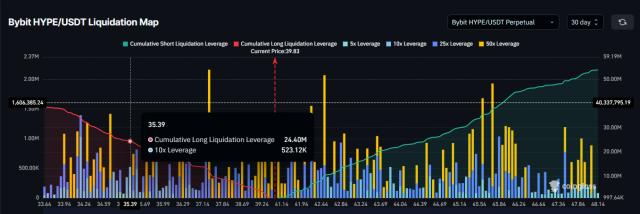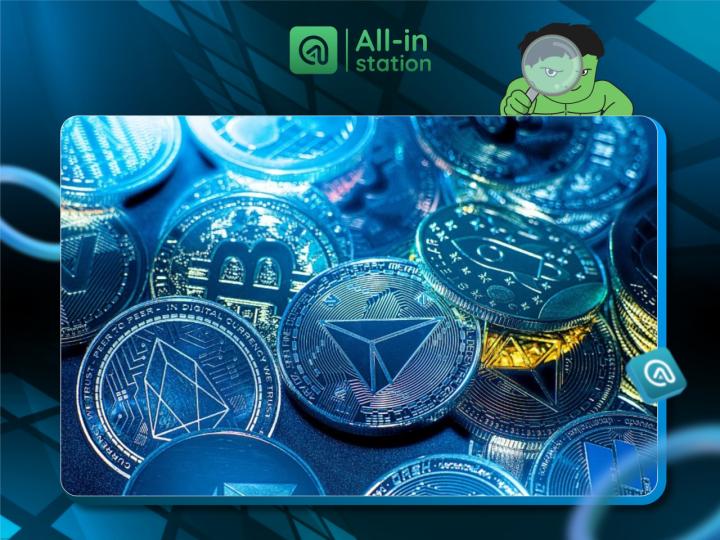The recent dramatic fluctuations in the cryptocurrency market—Bitcoin prices falling below the key $100,000 mark and billions of dollars in liquidations across the network—are like a sudden "stress test." This has not only exposed the widespread fragility in the market but also prompted us to re-examine the structural forces that can maintain systemic stability amidst turmoil.
Against this backdrop, BCT, with its forward-looking economic design and compliance practices, demonstrates a resilience that distinguishes it from traditional cryptocurrency projects. Many observers have inquired about its underlying logic and architecture. Therefore, this article aims to systematically analyze the sources of its robustness from an academic perspective, and to conduct an in-depth discussion across four dimensions: the deep-seated causes of market flaws, the economic incentive mechanism of the BCT token, the underlying support architecture of the BUYCOIN ecosystem, and its potential future development path.
I. The underlying logic of market panic: the structural defects of traditional models
This market correction has exposed several fundamental weaknesses in the traditional cryptocurrency ecosystem, primarily its overly high coupling with the traditional financial system and the lack of an endogenous value support mechanism:
Leverage dependence and liquidity coupling effect
With the increasing prevalence of Bitcoin ETFs, futures, and other derivative instruments, the liquidity transmission path between crypto assets and the traditional financial system has become increasingly significant. Against the backdrop of heightened macroeconomic uncertainty (such as recessionary expectations or a shift in monetary policy), institutional investors tend to synchronously reduce their exposure to risky assets, triggering cross-market deleveraging. For example, in June 2025, Bitcoin ETFs experienced a single-day net outflow of $140 million, creating a negative liquidity shock. This structural dependence is causing crypto assets to gradually deviate from their initial positioning as a "decentralized store of value," instead becoming embedded within the cyclical fluctuations of traditional finance.
Procyclicality of structural selling pressure by miners
As cornerstone participants in the Bitcoin network, miners face high operating costs (such as electricity and hardware depreciation), forcing them to continuously liquidate assets on the secondary market to maintain operations. Even during periods of price decline, the rigid selling pressure from miners exhibits a pro-cyclical characteristic, amplifying supply-side pressure. This rigid selling behavior continues to create supply pressure, transforming miners from theoretically "long-term holders" into "passive short-selling forces," thereby reinforcing the negative feedback loop in the market.
Lack of value support and speculative pricing
Currently, most crypto assets lack sustainable income models or practical applications, and their price formation mechanisms are highly dependent on market liquidity and speculative sentiment. For example, after reaching an all-time high in October 2025, Bitcoin quickly retreated by more than 20%, which technical analysts judged as entering a "bear market structure." When faced with systemic risks, such assets are highly susceptible to liquidity depletion and price collapse due to a collapse in confidence.
II. Economic Model Design of BCT: Deflation Mechanism and Endogenous Value Cycle
BCT constructs an endogenous value system with counter-cyclical properties through a "burn-to-mine" deflationary mechanism:
Destruction of proof mechanism and deflation effect
BCT has a total supply cap of 333 million tokens and achieves continuous deflation through "burn mining." Users can activate a smart contract mining pool by burning BCT (which simultaneously burns 10% of their DRDR tokens). Rewards are generated at a 1:2 ratio based on the amount burned, with 1% of the burned tokens released daily in batches until all rewards are claimed. This mechanism deeply binds token burning to mining incentives, forming a closed loop that reinforces scarcity by ensuring that "circulating supply decreases as participation increases." Unlike traditional Proof-of-Work (PoW) mechanisms where miners must sell tokens to cover operating costs, BCT's burning directly embeds value within the ecosystem, significantly reducing the impact of external selling pressure on the secondary market.
Endogenous value cycle and economic depth
BCT redefines the paradigm of value creation and distribution, achieving self-driven and sustainable prosperity of its ecosystem through a sophisticated closed loop of "value creation - value capture - value feedback." The core of its endogenous value cycle lies in: user growth driving enhanced network effects, ecosystem prosperity accelerating deflation, and value enhancement attracting high-quality participants, jointly promoting the iteration of underlying technologies and the innovation of application scenarios, thereby bringing a continuous stream of new vitality and a broader user base to the ecosystem. This rigorous closed-loop system allows BCT's value foundation to transcend mere market sentiment, deeply rooted in solid network utility, mandatory scarcity, and a continuously expanding ecosystem. BCT is not only a token economics experiment but also a significant innovation in the core production relationship of blockchain—"co-builders sharing value"—providing a forward-looking solution for constructing a sustainable, self-operating decentralized economic paradigm.
III. Compliance Architecture and Governance Mechanism of the BUYCOIN Ecosystem: Building Institutional Trust
BCT's system resilience is rooted in BUYCOIN exchange's compliant operations and decentralized governance system, which together reduce policy uncertainty and operational risks.
Full License Compliance and Regulatory Foresight
BUYCOIN has obtained a US MSB financial license and is continuing to pursue compliance applications in jurisdictions such as Canada and Australia. This institutionalized compliance framework not only mitigates the risk of sudden collapses like FTX due to regulatory gaps, but also provides a necessary institutional foundation of trust for institutional funds to enter the market.
DAO Governance and Interest Alignment Mechanism
BUYCOIN leverages its BCT DAO to delegate significant decision-making power to the community, achieving a co-governance model where "users are shareholders." Users participate in governance voting and receive airdrop rewards by staking BCT, thus forming a deep connection with the ecosystem's development. This governance structure endows the system with antifragility: in extreme market conditions, the withdrawal of speculative funds actually prompts community members to optimize ecosystem parameters (such as adjusting the deflation rate) and upgrade the system based on long-term value consensus.
Hybrid architecture and ecosystem matrix support
BUYCOIN employs a hybrid engine architecture of "off-chain order book matching + on-chain final settlement," achieving a transaction processing capacity of 300,000 transactions per second. This retains the efficiency of centralized systems while offering the security and transparency of decentralized networks. Furthermore, its ecosystem incorporates DeFi protocols, a Launchpad platform, social features, and payment scenarios (such as BCTPay), giving BCT multi-dimensional application value and effectively reducing reliance on a single transaction function.
IV. Future Outlook: The Path to Value Reconstruction After Stress Testing
This market adjustment has provided structural development opportunities for BCT and BUYCOIN:
Accelerated Deflation and Value Reassessment
During a bear market, the market tends to sell assets lacking cash flow or practical applications, and shift funds to mainstream cryptocurrencies with features like "continuous burning + dividends." BCT's burning mechanism may further accelerate deflation during a bear market, pushing its long-term value curve upward.
Consensus purification and community governance optimization
The exit of speculative participants allows ecosystem governance to focus more on long-term stakeholders. For example, DAO voting can efficiently advance strategic decisions such as technology upgrades, compliance expansion, or ecosystem mergers and acquisitions.
Counter-cyclical ecosystem expansion opportunities
The market's undervaluation provides BUYCOIN with a strategic window to integrate high-quality projects and acquire users at low cost. For example, it could explore acquiring compliant payment protocols or cross-chain infrastructure to further expand the application boundaries of BCT in scenarios such as carbon credits and tokenization of physical assets.
Conclusion: A paradigm shift from "speculative symbols" to "institutional assets"
The resilience demonstrated by BCT and BUYCOIN signifies a gradual evolution of the cryptocurrency sector from an emotion-driven speculative market towards a new paradigm based on mechanism design and institutional trust building. Their deflationary economic model fundamentally alleviates the issues of token issuance and selling pressure inherent in traditional tokens, while their fully licensed compliance architecture and DAO governance model inject sustainable institutional resilience into the system. Although cyclical market fluctuations will persist, projects with intrinsic value, shared benefit mechanisms, and forward-looking compliance strategies are expected to lead structural changes in the industry's evolution, driving the crypto asset class towards maturity and institutionalization.
[Disclaimer]
This article is based solely on publicly available information for a neutral discussion. All models, data, and conclusions do not constitute a promise or implication of future performance. The crypto ecosystem is evolving rapidly, and parameters, rules, and external environments may be adjusted. Readers are advised to verify the latest information and make independent judgments.
This article does not constitute any investment advice. All crypto assets carry significant upside and downside risks. The operating model, fee revenue, token burning, and dividend rules of any exchange are all affected by external variables such as market conditions, regulatory policies, and technological advancements, and therefore do not offer guaranteed returns or principal protection. Please conduct independent research, carefully assess your own risk tolerance, and make rational decisions.
References
- Deutscher, M. (2025). BTC ETF Flows and Macro-Induced Sell-Offs. Blockchain News.
- Cointelegraph Research (2025). Three Key Factors Helping Bitcoin Avoid Bear Market Territory.
- COM (2025). BUYCOIN Exchange & BCT Tokenomics Whitepaper.
- Sygnum Bank (2025). The Role of Institutional Flows in Bitcoin Price Support Mechanisms.
- BUYCOIN (2025). Toucan Protocol: Base Carbon Tonne (BCT) Use Case Analysis.







